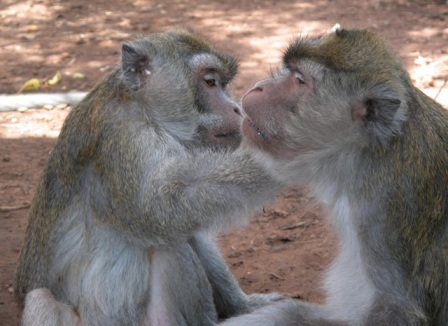Action for Primates

|
Action for Primates |

|
|

Millions of wild animals, including non-human primates, are held captive in thousands of zoos across the world. Many zoos are not accredited and maintain poor standards, so that the complex social, behavioural and psychological needs of non-human primates are not met. In many zoos, wild animals are subjected to the additional stress of being used as photo props, forced to take part in shows and encounters with people to 'entertain' visitors.
The artificial and restricted environment in which these animals are kept – even so-called natural enclosures – cannot compare with their natural habitat. Denied their freedom inside zoos, non-human primates have no control over their lives, which are often a mixture of boredom, frustration, lack of privacy, continuous anxiety and fear from exposure to people (Collins et al; Hosey et al 2023)...and worse. In testament to the harmful environment of zoos, some are using drugs to 'calm' the animals (Laidman 2005).
Further, non-human primates in zoos are no longer part of their normal ecosystem. They cannot contribute to the normal cycle of life and death; they cannot contribute to the propagation of their species nor have an impact on the gene pool of their species.
Another disturbing issue is the killing of healthy animals. When zoos have a 'surplus' of a particular species or do not want to keep them for various reasons, they may kill the animals or send them to be used in research laboratories to make room for others (Anon 2004, 2017; Prescott 2006; Wikipedia). The European Association of Zoos and Aquaria (EAZA) executive director Dr Lesley Dickie estimates that between 3,000 and 5,000 animals are management-euthanised
in European zoos in any given year (Barnes 2014).
Why do people support the existence of zoos
Zoos and those who support them will justify their existence for various reasons, including education and conservation (McKie 2020).

Education: People often defend zoos on the basis that these institutions somehow 'educate' people about wildlife and give them a better appreciation which might lead to a more benevolent view. However, one cannot gain a true appreciation for wildlife by seeing them in captivity, in a setting that is abnormal and artificial for them. A well-done nature documentary on wild animals in their natural environment would provide a better education, understanding and appreciation of the species. The few studies that have been done on this issue have shown that, in general, people do not go to zoos to be educated; they go to be 'entertained' and spend most of their time socialising with each other or viewing the 'exciting exhibits'. The presence of and noise caused by visitors has a detrimental effect on the animals (Quadros et al 2014; Sherwen et al 2015). Just as important is the actual 'lesson' that people are being 'taught': because they see these animals in what are virtual prisons, people come away thinking (either overtly or subconsciously) that it is okay to take animals from the wild and put them in cages if it is in the interests of people and even if it is not in the interests of the animals. This is perhaps the worst 'lesson' or 'education' that is unavoidably provided by zoos.

Conservation: People also defend zoos on the basis that this is the only place some species might survive or that we can save a species from extinction in this way. There are literally many thousands of species which are threatened, endangered or on the brink of extinction due to human activities; we simply do not have the resources to save them all in this fashion. Moreover, zoos are usually full of non-threatened, appealing species, kept in captivity simply to entertain the public. Human encroachment on and destruction of habitat are the most important issues with respect to wildlife and extinction. No captive breeding program could ever resolve this situation. If, for example, we are successful at breeding orangutans in a zoo, where do we release them if they no longer have a home in the wild? How will people learn that the most important things that we as humans can do for wild animals are to protect their habitats and to stop capturing and killing them. And, just as importantly, breeding orangutans in captivity, an abnormal environment where they will have none of the natural and normal pressures on their lives, will lead to individuals who are not 'real' orangutans in the wildlife sense.
People should not patronise zoos. Instead, children and others should be encouraged to watch quality wildlife documentaries to appreciate wild animals in their natural habitats and as part of the world's ecosystem. People should also be encouraged to donate to worthwhile projects that protect wildlife habitats, rather than pay to watch wild animals confined in an artificial environment.
A plan by the Helsinki Zoo to kill its 14 baboons and replace them with more cold-resistant Japanese snow monkeys caused such an uproar in Finland that the zoo has been forced to keep them.
Small arboreal primates were more likely to be affected negatively by visitors.
Visitor noise was associated with negative responses by primates
![]()
![]()
![]()
![]()
![]()
Contact us via E-mail
Copyright © 2020-2026 Action for Primates. All rights reserved.